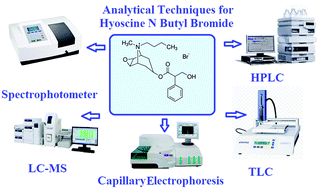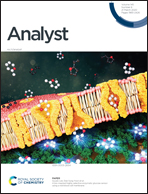Analytical review: analytical techniques for hyoscine N butyl bromide
Abstract
It is not a simple task to develop techniques for analyzing tricyclic quaternary ammonium alkaloids (TCQAAs) because of the relative polarity and alkalinity of the latter. Moreover, less volatility of these alkaloids prevents the establishment of direct GC methods. Hyoscine N Butyl Bromide (HNBB) is one of the most frequently used antispasmodic TCQAAs. There are many therapeutic uses of HNBB other than in antispasmodic activity. It may be used as an analgesic and local cervical antispasmodic drug in maternity labor. A variety of analytical techniques (colorimetric, spectrophotometric, chromatographic, electrophoretic, and electrochemical techniques) have been reported for HNBB analysis. Moreover, two stability-indicating chromatographic methods have also been developed for the drug. Many multistep colorimetric techniques have been developed for HNBB analysis on two main bases; charge-complex formation and the reduction properties of the drug. No spectrofluorometric methods have been reported for HNBB measurement. Many chromatographic methods have been mentioned for HNBB analysis. However, most of them are quite low in terms of sensitivity because of the low ultraviolet (UV) absorbance character of the drug. Therefore, testing the drug by using other detectors, such as refractive index or corona charged aerosol detectors, is strongly recommended. The most sensitive methods are liquid chromatography-mass spectrometry (LC-MS/MS) and ultra-performance liquid chromatography-electrospray ionization-tandem mass spectrometry (UPLC-ESI-MS/MS) techniques since they can detect as low as 1 ng mL−1 and 0.03 ng mL−1, respectively. Determination of the drug by thin-layer chromatography (TLC) is possible only with the use of a reversed-phase TLC plate because of the high polarity of HNBB. A few electrophoresis techniques and many electrochemical methods have also been reported. Two accelerated stability studies were performed for HNBB using LC/MS and high-performance liquid chromatography-ultraviolet (HPLC-UV) methods. The time of the stability study and the presence of mefenamic acid greatly affect the percentage of drug degradation. As a general observation by comparing those two stability methods, strict guidelines for performing stability studies are strongly recommended. Further evaluation of the greenness of all analytical methods for the drug is highly recommended for the choice of more eco-friendly techniques for the safety of the environment.



 Please wait while we load your content...
Please wait while we load your content...